Classic Studies and Atlases on Biblical Geography (7 vols.)
Digital Logos Edition
Overview
Classic Studies and Atlases on Biblical Geography offers a comprehensive look at the Holy Land’s geography in the nineteenth and early-twentieth centuries. Several theologians, historians, and biblical scholars of the day offer their expertise in nearly 3,000 pages of maps, geographic surveys, historical notes, travelogues, and translations—bringing to life the names we read about in the Bible.
With Logos Bible Software, these valuable volumes are enhanced by cutting-edge research tools. Important terms link to dictionaries, encyclopedias, and a wealth of other resources in your digital library. Powerful topical searches help you find exactly what you’re looking for. Tablet and mobile apps let you take the discussion with you. With Logos Bible Software, the most efficient and comprehensive research tools are in one place, so you get the most out of your study.

Key Features
- Linguistic translations and explanations of place names in English, Arabic, Hebrew, and Greek
- More than 60 maps, as well as charts and tables
- Anthropological and historical notes
Product Details
- Title: Classic Studies and Atlases on Biblical Geography
- Volumes: 7
- Pages: 2,796
Individual Titles
- The Bible Atlas of Maps and Plans by Samuel Clark
- Atlas of the Historical Geography of the Holy Land by George Adam Smith
- An Historical Textbook and Atlas of Biblical Geography by Lyman Coleman
- Sacred Geography and Antiquities by E. P. Barrows
- Biblical Researches in Palestine and the Adjacent Regions, vol. 1 by Edward Robinson and Eli Smith
- Biblical Researches in Palestine and the Adjacent Regions, vol. 2 by Edward Robinson and Eli Smith
- Physical Geography of the Holy Land by Edward Robinson
This title is included in the following collections
You can save when you purchase this product as part of a collection.
Logos 7 Lutheran Diamond Legac...
$2,999.99$2,999.992025 Lutheran Portfolio
$4,749.99$3,562.49Logos 7 Lutheran Portfolio Leg...
$4,749.99$4,749.99Logos 9 Lutheran Portfolio Leg...
$4,749.99$4,749.99
- $23,999.99$17,999.99
- $24,999.99
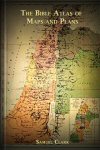
Samuel Clarke’s The Bible Atlas of Maps and Plans illustrates the geography and topography of the Old and New Testaments with explanatory notes on the Apocrypha. This volume also contains a complete index of the geographical names listed in the Bible, with the original name in Hebrew and Greek, as well as the English name as of 1868.
Samuel Clark (1810–1875) was an English clergyman who served as rector of Eaton Bishop, Herefordshire, and principal of the National Society’s Training College, Battersea.
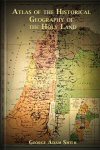
George Adam Smith designed and edited the Atlas of the Historical Geography of the Holy Land, incorporating 21 years of research and debate on the region of Syria. This volume contains 60 color maps, notes to the maps with an explanatory bibliography, and chronological tables.
George Adam Smith was principal and vice-chancellor at the University of Aberdeen, as well as a fellow of the British Academy. He is the author of The Cambridge Bible for Schools and Colleges: Deuteronomy.
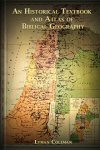
Lyman Coleman believed that history and geography should be inseparable, and to that end An Historical Textbook and Atlas of Biblical Geography was published to help historians and history instructors give context to their study of history with a clear and living picture of the biblical stories’ natural context. This volume is a textbook of biblical history that covers the Antediluvian period through Christ’s entry into Jerusalem, and contains eight maps and explanatory notes, as well as charts and tables.
Lyman Coleman (1796–1882) was a professor at Lafayette College who also wrote Antiquities of the Christian Church.
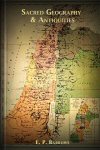
Sacred Geography and Antiquities was compiled with the goal of illustrating sacred Scripture to assist biblical study. Part 1 outlines sacred geography with a general view of the regions of Palestine and the Jordan Valley; ancient divisions of the Israelites’ land; the climate, soil, and natural history of Palestine; and other surrounding regions. Part 2 regards biblical antiquities—agricultural, cultural, governmental, militaristic, and sacred.
E. P. Barrows (1807–1888) was an American clergyman who, in addition to Sacred Geography and Antiquities, also wrote numerous articles that appeared in Bibliotheca Sacra.

Biblical Researches in Palestine and the Adjacent Regions presents a historical review of Palestine’s geography since the times of the New Testament, with particular attention to the orthography of Arabic names. Based on the travels of Edward Robinson and his interpreter Eli Smith, Biblical Researches is written in the style of the traveler’s personal narrative, with accompanying notes and historical illustrations. This volume contains a preface; an orthography and pronunciation of Arabic names and words; a table of measures, weights, and money; sections 1–10, and notes.
Edward Robinson (1794–1863) was known as the “Father of Biblical Geography,” and founded the Biblical Repository and Bibliotheca Sacra. He explored Palestine extensively, and Robinson’s Arch in the Old City of Jerusalem was named for him. In 1837, he took the post of professor of biblical literature in the Union Theological Seminary, New York, where he remained until his death.
Eli Smith (1801–1857) was an American linguist and missionary who explored the Holy Land with Edward Robinson, serving as an interpreter. He graduated from Yale and Andover Theological Seminary, and contributed to Missionary Researches in Armenia.
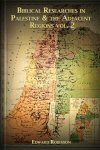
Biblical Researches in Palestine and the Adjacent Regions presents a historical review of Palestine’s geography since the times of the New Testament, with particular attention to the orthography of Arabic names. Based on the travels of Edward Robinson and his interpreter Eli Smith, Biblical Researches is written in the style of the traveler’s personal narrative, with accompanying notes and historical illustrations. This volume contains sections 11–17 and notes.
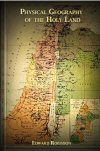
Edward Robinson’s Physical Geography of the Holy Land is a supplement to his earlier work, Biblical Researches in Palestine and the Adjacent Regions. In this volume, he focuses on Palestine as the central point of the Holy Land, with a comprehensive survey of all of the geographic features of the region.
Reviews
3 ratings

Angus K.F. Cheung
6/14/2016

KarenCoker
6/1/2016

Veli Voipio
4/21/2016
The Atlas of the Historical Geography of the Holy Land by George Adam Smith has many detailed maps. The books have lots of information. They are outdated, but the point is that the maps were made before the modern development